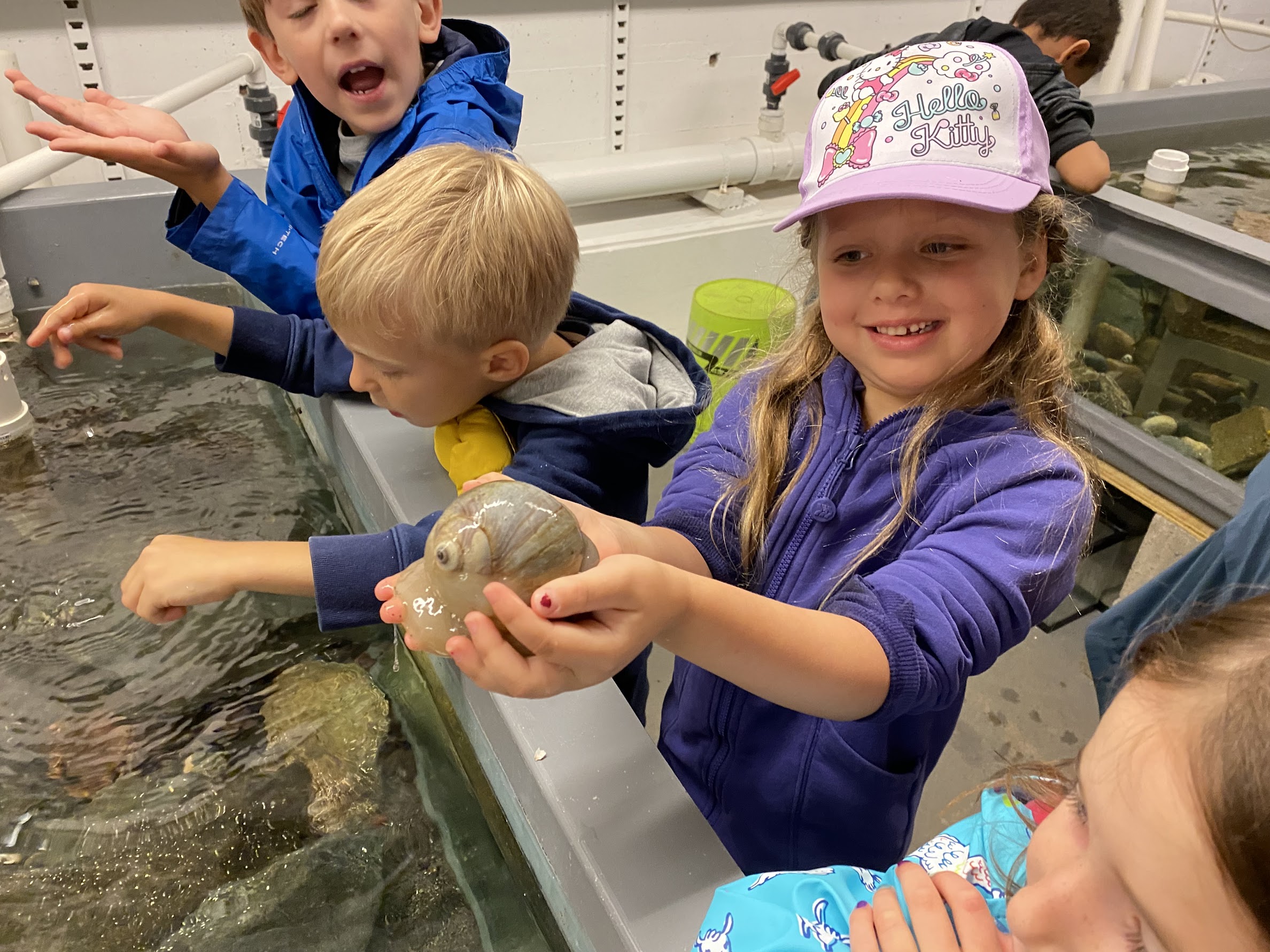 Rashi’s Kindergartners visited Northeastern University’s Marine Science Center in Nahant, MA for a day filled with hands-on learning. This trip punctuated their marine biology unit. By the end of the day, when asked what their favorite part was, the children immediately exclaimed, “Everything!”
Rashi’s Kindergartners visited Northeastern University’s Marine Science Center in Nahant, MA for a day filled with hands-on learning. This trip punctuated their marine biology unit. By the end of the day, when asked what their favorite part was, the children immediately exclaimed, “Everything!”
In the classroom, students learned about various marine animals and their environments. “We learned about several adaptations that ocean animals need to survive. For example, the blubber on a seal or the bioluminescence of deep sea creatures,” said Kindergarten lead teacher Amanda Findlay. “We also learned about the salinity of the ocean, and how salt makes things float. In addition, the children learned about the different zones of the ocean, such as the twilight and midnight zones.” After weeks of studying, students were excited to bring their knowledge from the unit out into the field, starting with finding animals in the tide pools.
Led by three experienced field guides, the class started their exploration in the low-intertidal zone—the part of the shore that is only exposed during low tide. The guides brought hydrometers for the students to measure the salinity of the tide pools. During this effort, students were able to apply lessons from the classroom directly to the field. “Looking in the tide pools was my favorite part,” said Saoirse I.
Students eagerly reached into the pools to pick out critters and compare them to identification charts. “I saw lots of snails and some crabs,” said Saoirse. “I learned that there’s so many different kinds of one animal.”
“We learned how to catch crabs!” said Chase G. “We caught a lot, and I learned how to climb around the tide pools safely.”
After combing through the lower pools, students moved up to the mid and high-intertidal zones, where they noticed a decrease in the biodiversity and number of animals. As they moved through the tide pools, the critters they found were transferred into a bucket to be brought back to the facility
 Once back inside and all dried off, students were led to a series of touch-tanks, which housed a variety of marine creatures for holding. Here, students were able to see even more of the animals they learned about, such as sea urchins and lobsters while also learning how to handle them with care and respect. The children were ecstatic as they held a slimy moon snail, pet the tail of the facility’s resident American lobster, and watched sea urchins wiggle their spikes up close and personal. “I saw a baby starfish! It was a little cold and wiggly,” said Simon R. as he reflected on his touch-tank encounters. The students were inquisitive and attentive, asking questions and paying rapt attention as the guides pointed out the feet on a sea star or the small fish that scattered once a hand was submerged.
Once back inside and all dried off, students were led to a series of touch-tanks, which housed a variety of marine creatures for holding. Here, students were able to see even more of the animals they learned about, such as sea urchins and lobsters while also learning how to handle them with care and respect. The children were ecstatic as they held a slimy moon snail, pet the tail of the facility’s resident American lobster, and watched sea urchins wiggle their spikes up close and personal. “I saw a baby starfish! It was a little cold and wiggly,” said Simon R. as he reflected on his touch-tank encounters. The students were inquisitive and attentive, asking questions and paying rapt attention as the guides pointed out the feet on a sea star or the small fish that scattered once a hand was submerged.
After lunch and a walk to the greenhouse, Kindergarten’s embarked on their final activity. There, they looked at organisms through microscopes and felt preserved bones and pieces of baleen (comb-like plates used for filter-feeding in place of teeth) from a whale. Students played a step-counting game to measure the approximate length of different types of whales. Referring back to their ID charts, they matched up types of shells to the animals they once belonged to, playing a real-life scientific matching game.
The Kindergarten trip to Nahant is a wonderful example of cumulative experiential learning that takes place in and around Rashi. After its second successful year, students returned to campus, hoping to return with their own families.



